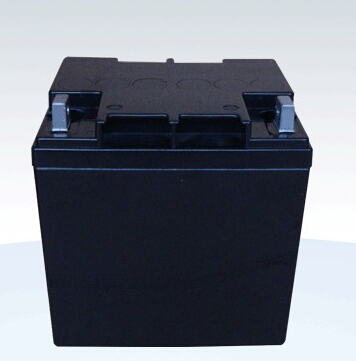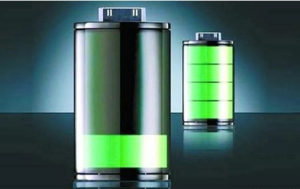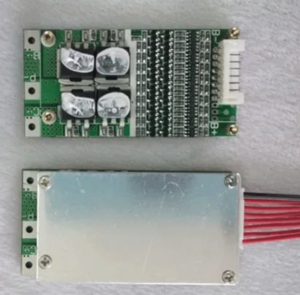Lead-acid batteries are a common type of battery used in automobiles, UPS (uninterruptible power supply systems), and other areas where large amounts of electrical energy need to be stored. This article will discuss with you the principles, structure, performance characteristics and applications of lead-acid batteries.

1. Principle of lead-acid battery
A lead-acid battery is a device that uses chemical reactions to convert chemical energy into electrical energy. It is based on the chemical reaction between lead and lead persulfate to produce electrical energy.
Lead-acid batteries contain two basic electrodes, one is the positive electrode (positive plate), usually made of lead-silicon alloy; the other is the negative electrode (negative plate), usually made of pure lead. The two electrodes are placed in a dilute sulfuric acid called electrolyte.
During the charging process, voltage is applied through an external power supply, and the lead acid (PbSO4) on the positive plate is converted into lead persulfate (PbO2) through reaction, while the lead persulfate on the negative plate is reduced to lead. The reaction equation is as follows:
Positive electrode reaction: PbSO4 + 2H2O → PbO2 + 2H2SO4 + 2e^-
Negative reaction: Pb + H2SO4 → PbSO4 + 2H+ + 2e^-
During the discharge process, the chemical reactions of the positive and negative electrodes are reversed, and the electrochemical reaction converts lead persulfate and lead into lead acid and releases electrical energy.
2. Structure of lead-acid battery
Lead-acid batteries are made up of multiple cells, each containing a positive plate and a negative plate that are separated by isolation and soaked in an electrolyte. There is also a component called a separator in the unit, which is used to isolate the positive and negative plates to prevent short circuits.
The casing is a sealed container that holds the battery cells. This housing is usually made of polypropylene or ABS plastic to ensure that the electrolyte does not leak. There are also some terminals and connectors on the case for connecting the battery.
3. Performance characteristics of lead-acid batteries
1. High energy density: Lead-acid batteries have relatively high energy density and can store more electrical energy.
2. Low Cost: Lead-acid batteries are less expensive to manufacture compared to other types of batteries.
3. Good cycle life: The cycle life of lead-acid batteries is usually 200 to 300 times, which is suitable for applications that require frequent charging and discharging.
4. Reliability: Lead-acid batteries have good electrochemical stability and are suitable for use in various harsh environments.
5. Safety: Lead-acid batteries are not easy to burn and do not cause the risk of fire or explosion.
However, lead-acid batteries also have several limitations, including larger size and weight, relatively high self-discharge rates, and limitations on charging time and charging current.
4. Application of lead-acid batteries
The main application areas of lead-acid batteries include:
1. Car batteries: Lead-acid batteries are widely used in cars to provide starting power for the engine and can provide power when the generator cannot run or the battery is low on power.
2. UPS (Uninterruptible Power Supply System): As the main power reserve of UPS, lead-acid batteries can provide power backup and provide stable power guarantee for computers, servers, communication base stations, etc.
3. Power system: Lead-acid batteries are used in power systems of automobiles, ships, electric vehicles, etc. to provide power reserves.
4. Solar panels: Lead-acid batteries can store the energy collected by solar panels and provide solar power reserve for homes, factories, agriculture, etc.
In addition, lead-acid batteries are also widely used in various electrical appliances, instruments, and machinery and equipment, such as lamps, power tools, testing instruments, etc.
5. Maintenance and maintenance of lead-acid batteries
1. Charging method: The charging method of lead-acid batteries can use constant current charging, constant voltage charging or pulse charging, but pay attention to the control of charging current and charging time, and do not overcharge or overdischarge.
2. Temperature impact: The performance of lead-acid batteries is greatly affected by ambient temperature. Too high or too low ambient temperature will have adverse effects on battery life and performance.
3. Prevent deep discharge: Deep discharge of lead-acid batteries will damage the chemical substances and structure of the battery, resulting in insufficient battery capacity and shortened life. Try to avoid deep discharge.
4. Maintain electrolyte: The electrolyte in lead-acid batteries is a key component. The electrolyte level and density need to be checked regularly, and the electrolyte needs to be added or replaced in a timely manner.
5. Environmental protection: Lead-acid batteries are hazardous waste and should be processed and recycled in appropriate professional institutions to reduce pollution to the environment.
As a mature, reliable and widely used battery type, lead-acid batteries play an important role in various fields. During use and maintenance, it is necessary to correctly understand its working principle, basic structure, performance characteristics and common problems, and strictly abide by relevant usage specifications and safe operating procedures.




